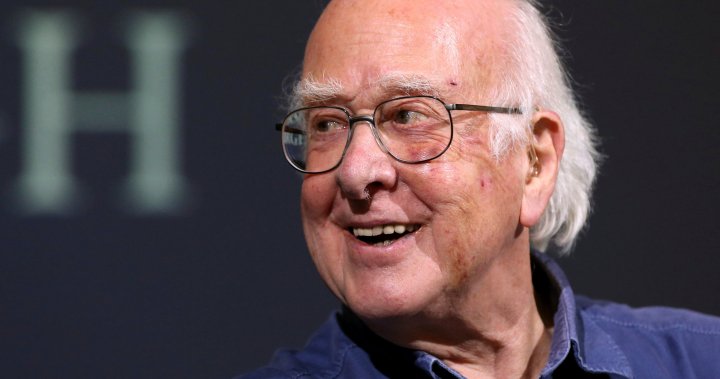Nobel prize-winning physicist Peter Higgs, who proposed the existence of the so-called “God particle” that helped explain how matter formed after the Big Bang, has died at age 94, the University of Edinburgh said Tuesday.
The university, where Higgs was emeritus professor, said he died Monday “peacefully at home following a short illness.”
Higgs predicted the existence of a new particle — the so-called Higgs boson — in 1964. But it would be almost 50 years before the particle’s existence could be confirmed at the Large Hadron Collider.
Higgs’ theory related to how subatomic particles that are the building blocks of matter get their mass. This theoretical understanding is a central part of the so-called Standard Model, which describes the physics of how the world is constructed.
Breaking news from Canada and around the world
sent to your email, as it happens.
Edinburgh University said his groundbreaking 1964 paper demonstrated how “elemental particles achieved mass through the existence of a new sub-atomic particle″ which became known as the Higgs boson.
In 2012, in one of the biggest breakthroughs in physics in decades, scientists at CERN, the European Organization for Nuclear Research, announced that they had finally found a Higgs boson using the $10 billion particle collider built in a 27-kilometre tunnel under the Swiss-French border.
Higgs won the 2013 Nobel Prize in Physics for his work, alongside Francois Englert of Belgium, who independently came up with the same theory.
Edinburgh University Vice Chancellor Peter Mathieson said Higgs, who was born in Newcastle, was “a remarkable individual – a truly gifted scientist whose vision and imagination have enriched our knowledge of the world that surrounds us.”
“His pioneering work has motivated thousands of scientists, and his legacy will continue to inspire many more for generations to come.”
Higgs’ work helps solve one of the most fundamental riddles of the universe: how the Big Bang created something out of nothing 13.7 billion years ago.
Finding corroboration wasn’t easy. It took more than two decades, thousands of scientists and mountains of data from trillions of colliding protons.
And it needed the world’s biggest atom smasher CERN’s Large Hadron Collider to produce the extreme surge of energies simulating those 1 trillionth to 2 trillionths of a second after the Big Bang.

One highlight of Higgs’ illustrious career came during the 2013 presentation at CERN in Geneva where scientists presented in complex terms — unfathomable to most laypeople and based on statistical analysis — that the boson has been confirmed. He broke into tears, wiping down his glasses in the stands of the lecture hall.
Born in Newcastle, northeast England on May 29, 1929, Higgs studied at King’s College, University of London, and was awarded a PhD in 1954. He spent much of his career at Edinburgh, becoming the Personal Chair of Theoretical Physics at the Scottish university in 1980. He retired in 1996.
Higgs received honorary degrees from more than a dozen universities, including Edinburgh in 1998, Swansea in 2008, Cambridge in 2012 and St. Andrews and Manchester in 2013.
In 2013 he was appointed a Companion of Honour by Queen Elizabeth II.
© 2024 The Canadian Press





